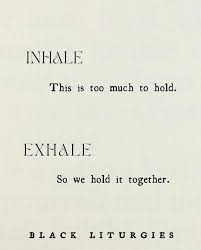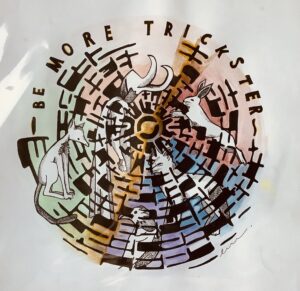I recently bumped into an old friend and student who I hadn’t seen for 20 years. He asked “was I still as radical in my theology and thinking as ever?” I said yes probably even more so. He then preceded to tell me about how his church had become fully inclusive a while back and how they lost people. I wonder if in part if he was checking if I was still a safe person to this news with? The encounter made me wonder how in an age of virtue signalling that can be nefarious, do people who need to share things know you are safe?
So I thought I would ask my friend Jo Dolby a few questions. She is the Community Director of The Oasis Hub Bath.
1) What practices and attitudes can an individual adopt to make it visible and known that they are a safe person for others?
The bottom line for me is about being someone that is committed to self awareness, and who has a desire for learning and growth. The safest people to me are people I know have ‘done the work’ on themselves, whatever that means for them. They know their weaknesses, own their mistakes, apologise when they get it wrong, and see all others as teachers who can help them work out their blind spots and do better when they know better. An obvious process that helps with this is something like therapy, but also anything like spiritual direction, supervision, appraisals (360 feedback is great!) reflective practice etc. Even smaller daily practices can be amazing – like the examen, journalling, meditation or prayer where you leave space for silence and stillness and actively reflect on what you’re experiencing, and what you’re noticing about yourself, others and the world around you. So much of being safe for others is about awareness, so do what you can to increase your own awareness, and tell others about these practices!
I’d also add that it’s impossible to be a totally safe person, and that’s ok! I love Brené Brown’s discussion of the difference between safe spaces and brave spaces, where she argues that to promise safety for someone is to make guarantees about other people (and I would argue yourself) that you just cannot make. We are all human, and we will make mistakes and hurt people, so we cannot always guarantee to be safe, or to provide a totally safe space. A brave space is one where difficulties and differences still happen, but we have the bravery to have the tough conversations, express how we truly feel, and deeply listen to others so we learn and are changed and challenged as a result. I would say try to be safe but mostly be brave – listen as much as you can and ask questions to deepen your understanding (I have a rule of trying to ask two questions before giving an opinion or statement in response to someone!), be open to being wrong, be kind to yourself, be honest and expect others to educate you. If you don’t know the right words to use, just ask!
Finally, don’t underestimate the little things. Small signs often go a long way. When you are wearing a rainbow lanyard, when you include your pronouns in your email footer, when your display a Black Lives Matter badge on your rucksack, when you mark Pride month as a manager with your team in some way, these things communicate to others that you ‘get it’, that you care about this stuff, that you understand and value difference and therefore you will understand and value their difference. This advert for Oslo Pride is incredibly powerful, and demonstrates what a big impact these small acts can have: https://www.youtube.com/watch?v=UVepoXddTW4
2) How do you create and hold a space where people feel safe enough to share their real stories and identities, especially when they may have been hurt by church before?
I would echo my thoughts above on creating a brave space, rather than promising a safe one. If you want to dig a bit deeper into what this looks like, the definition of a brave space from the Oxford Review is helpful;
‘Brave space is a concept that goes beyond the traditional safe space ideology. While safe spaces aim to provide refuge from discrimination and harm, Brave Spaces encourage individuals to engage in courageous conversations, confront biases, and challenge perspectives constructively. It acknowledges that discomfort and growth often go hand in hand, and by stepping out of comfort zones, meaningful progress towards inclusivity can be achieved.’
People may feel safe to share their own stories and identities when they see this kind of behaviour modelled – when they know people are not afraid to have tough conversations, challenge perspectives (but from a place of kindness and respect), and when they feel they are seen as someone to learn from, not someone to ‘correct’ or change to become like the group or socially dominant culture of that setting. It’s the difference between inclusion and affirmation – where people are celebrated and seen as a gift, rather than tolerated or included and seen as an inconvenience.
Victoria Stubbs from the University of Maryland, wrote a paper on brave spaces defining six pillars of a brave space, which I also think are helpful. Perhaps you could think about what this might look like in your context or role?
1) Vulnerability (making yourself vulnerable and at risk of harm)
2) Perspective taking (owning our own biased perspective and being curious about other’s perspectives)
3) Leaning into fear (doing the thing we’re afraid of)
4) Critical thinking (questioning and being open to being questioned)
5) Examining intentions (“Is what I am about to share for the purpose of advancing dialogue or merely self-serving? Am I oversharing? Is what I am saying operating from a place of personal integrity? Examining our intentions also enables us to hold ourselves accountable for our words and actions thus promoting a deeper level of self-awareness.”)
6) Mindfulness (Being fully here, in this moment)
When I think specifically about how to make something or somewhere safe (or brave!) for those who have been hurt by church, I also think applying a trauma informed approach is so important. That’s a whole blog post in itself, but across most disciplines there’s agreement that being trauma informed means embedding and applying principles such as trustworthiness, safety (physical and psychological), choice, collaboration, empowerment and cultural consideration.
I’ve chucked some big words and theory out there and you’ll need to work out the application and examples for your context, but there’s as much to be said about doing the right and little things consistently. Asking about pronouns, challenging the sexist joke someone makes, apologising for the mistake you made – all those things are also the application of those bigger principles.
3) In a culture where inclusion can sometimes be used as virtue-signalling, how do you discern authenticity in others and how can I demonstrate authenticity as a leader?
Authenticity to me, particularly in leadership, is so often the difference between words and actions, and whether those things line up. So many people in the past have told me how they’re personally affirming theologically and are totally with and for me, but continue to stay silent about those beliefs. Or others will attend churches that discriminate against people like me and cause great harm with the non-affirming theology they teach and model, but hey, at least “the kids work is great”. Not only do they attend these churches but they resource, support and enable them through the giving of their money, time and energy. They’re part of the problem! I will believe you are authentic when your actions start to match your words, and when you show up in solidarity and sacrifice, speaking out about the things that matter even if it costs you (and your family) something in the process.
I would also challenge us to go beyond inclusion. We don’t talk enough about the problems of inclusion, that actually, it doesn’t go far enough! There is a huge difference between including someone, allowing someone in your space that’s comfortable for you, where you hold the power etc, and affirmation – where difference and diversity are celebrated and seen as essential for the flourishing of a community, and where it’s understood that a community without difference is a community that is lacking and impoverished. You need me and I need you, and when that’s recognised, we can all flourish.


